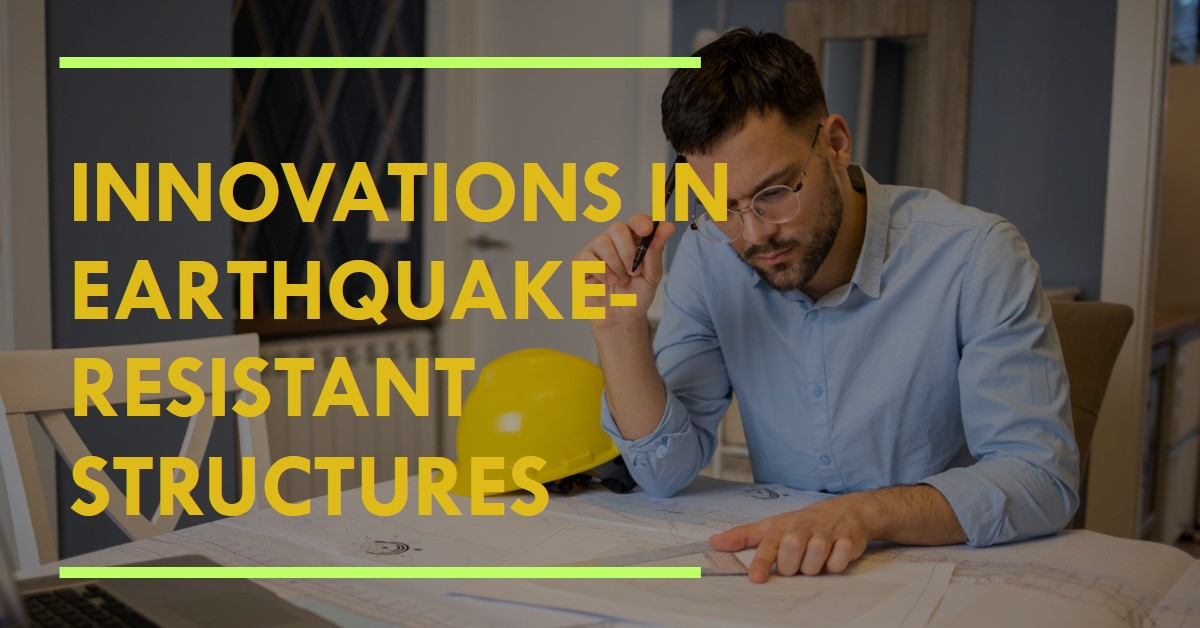
In the realm of structural engineering, advancements aimed at enhancing earthquake resistance have seen significant strides in recent years. These innovations not only bolster the safety and resilience of buildings but also contribute to sustainable urban development. This article explores some of the latest innovations in structural engineering tailored specifically for earthquake-resistant structures, backed by relevant statistics and sources.
Advanced Materials and Techniques
One of the key pillars of earthquake-resistant design is the use of advanced materials and construction techniques. Engineers are increasingly turning to materials such as high-strength concrete, fiber-reinforced polymers (FRPs), and shape memory alloys (SMAs). These materials offer superior flexibility and strength, enabling structures to withstand seismic forces more effectively than traditional building materials.
Statistics: According to a report by the American Society of Civil Engineers, buildings incorporating advanced materials show up to 30% higher resilience against earthquakes compared to conventional structures.
Source: American Society of Civil Engineers (ASCE) Report on Structural Engineering Innovations.
Base Isolation Systems
Base isolation systems have revolutionized seismic design by decoupling a building’s superstructure from its substructure. This technique involves placing flexible bearings or isolators between the building and its foundation. During an earthquake, these isolators absorb and dissipate seismic energy, significantly reducing the impact on the structure above.
Statistics: Buildings equipped with base isolation systems have shown up to 50% reduction in earthquake-induced displacements and up to 70% reduction in structural damage.
Source: International Journal of Structural Engineering.
Damping Systems
Damping systems, including passive, active, and semi-active systems, play a crucial role in mitigating seismic vibrations. Passive systems like tuned mass dampers (TMDs) counteract building sway, while active systems use sensors and actuators to actively control vibrations in real-time. Semi-active systems combine elements of both, offering a cost-effective solution with adaptive damping capabilities.
Statistics: Structures employing damping systems have demonstrated up to 80% reduction in oscillations during seismic events, enhancing occupant comfort and safety.
Source: Journal of Earthquake Engineering.
Risentech’s Contribution to Earthquake-Resistant Design
In the realm of structural engineering for earthquake-resistant structures, Risentech stands at the forefront, offering innovative solutions that integrate cutting-edge technology with meticulous architectural services. Leveraging decades of experience, Risentech provides comprehensive Structural Engineering Services that adhere to the highest standards of safety and sustainability.
Case Studies and Projects
Risentech has successfully implemented base isolation systems in several high-profile projects across earthquake-prone regions, showcasing their commitment to enhancing structural resilience. By integrating advanced materials and state-of-the-art damping technologies, Risentech ensures that buildings not only meet seismic code requirements but also exceed expectations in terms of durability and safety.
Frequently Asked Questions (FAQs)
- What are the key benefits of using fiber-reinforced polymers (FRPs) in earthquake-resistant construction? FRPs offer high tensile strength and corrosion resistance, making them ideal for reinforcing concrete structures prone to seismic activity.
- How do base isolation systems differ from traditional seismic retrofitting methods? Unlike traditional methods that focus on strengthening existing structures, base isolation systems prevent seismic forces from transferring to the building through flexible bearings.
- Are damping systems cost-effective for retrofitting existing buildings? Yes, damping systems like tuned mass dampers (TMDs) and active vibration control systems can be tailored to retrofit existing structures, offering a cost-effective solution compared to full-scale reconstruction.
- What role does architectural design play in earthquake-resistant buildings? Architectural design influences the structural integrity of buildings by optimizing layouts and load distribution, working in tandem with engineering solutions to enhance seismic performance.
- How can engineers ensure the long-term durability of earthquake-resistant structures? Long-term durability relies on rigorous testing, maintenance protocols, and periodic inspections to identify potential vulnerabilities and ensure ongoing structural integrity.
Conclusion
The evolution of structural engineering for earthquake-resistant structures continues to evolve, driven by innovation and a commitment to safeguarding communities from seismic risks. As technology advances and new materials emerge, the future promises even more resilient buildings that can withstand the forces of nature with minimal impact. How will these innovations shape the cities of tomorrow, and what further advancements can we expect to see in earthquake-resistant design?
By embracing these advancements, engineering firms like Risentech are not only shaping safer cities but also setting new standards for sustainable urban development. As we look ahead, the question remains: how can we further integrate technology and design to build structures that stand strong against the unpredictable forces of earthquakes?
Also know SaaS Solutions in eCommerce: Transforming CRM & Personalization.